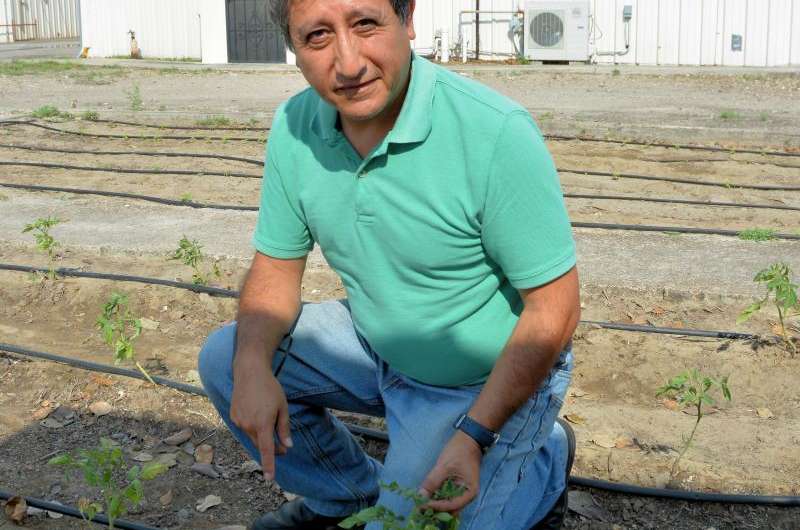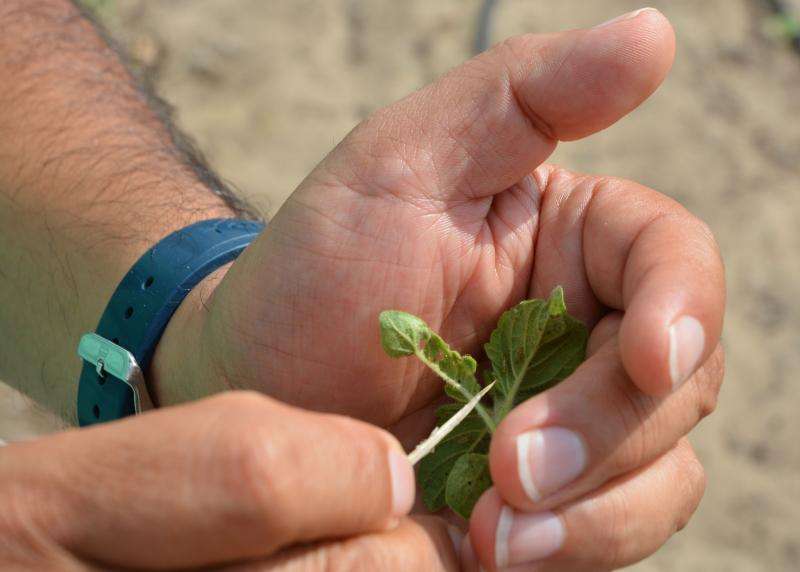Humans may be culprit in latest South Texas invasive insect problems

An insect considered beneficial in many parts of the world is causing havoc on vegetable crops in South Texas, according to a Texas A&M AgriLife Extension Service entomologist in Weslaco.
"We first found this insect, Nesidiocoris tenuis, commonly referred to as N. tenuis or the tomato bug, in commercial field crops in the Rio Grande Valley in October 2013," said Dr. Raul Villanueva. "But now we're finding it in abundant numbers on tomato crops throughout the area. It's causing fruit drop on both tomato and sesame crops. It's now well-established here."
For the first time, growers are having to spray insecticides this year to control N. tenuis because of their extremely high populations, in some cases hundreds per plant.
"What's really interesting about this insect is how it got here," Villanueva said. "I suspect that somebody illegally brought a bottle of these insects and intentionally released them either in Mexico or the U.S."
The tomato bug is originally from India and is commercially available in Europe to control whitefly populations in greenhouses.
"The illegal release was likely made to control whiteflies in greenhouses," he said. "They are a good predator of whiteflies and work very well. They prey at all stages, but especially as nymphs. But outside greenhouses they can cause a lot of problems, like we're seeing here now. So, it's a two-edged sword."

The tomato bug is considered zoophytophagous, meaning it feeds on a variety of prey.
If the release occurred in Mexico, Villanueva suspects they naturally migrated to South Texas. If they were released in California, they likely made their way here aboard tomato seedlings, tiny plants shipped to the Lower Rio Grande Valley in trays that growers use to start their crops.
On tomatoes, Villanueva said they cause flower abortion by feeding on the plant, reducing nutrients and causing the flower to drop, which reduces yields.
In sesame crops, they lay eggs on leaves and feed on pods. They cause necrotic patches on plant stems where they feed and lay eggs. They can also feed on the plants' pollen
"Sesame is a relatively new grain crop to the Rio Grande Valley," Villanueva said. "It's harvested for use on buns and as flour for cookies. It is grown practically year round here, and this year the area saw its largest sesame crop, some 15,000 acres."
The tomato bug has also been found on okra, squash and peppers but damage has so far been minimal in these crops.
"For now, pyrethroids have been providing control, but insecticides are expensive and we just don't know how long it will continue to be effective. That's why we're evaluating other insecticides for efficacy."
Danielle Sekula-Ortiz, the AgriLife Extension integrated pest management agent in Weslaco who first detected the tomato bug in South Texas sesame crops, said she was concerned when she found it because she knew they could damage tomatoes in the same way they were damaging sesame.
"They were becoming quite abundant and feeding heavily," she said. "So we met with about 30 sesame growers where Dr. Villanueva and I were able to inform them of N. tenius, or the tomato bug, and made recommendations on spraying for them. They are now well-established, so we expect to continue seeing them in the sesame growing season. We also have plans for more research to help our growers."
On the positive side of the double-edged sword, Villanueva suspects the bug may be reducing whiteflies on the South Texas cotton crop, though it hasn't actually be found on cotton yet.
"For the last two years, whiteflies have not been a serious problem in our cotton crops," he said. "We can't be sure there is a direct correlation, but because N. tenuis is so well-established here, they may be affecting whitefly populations in cotton."
Provided by Texas A&M University





















